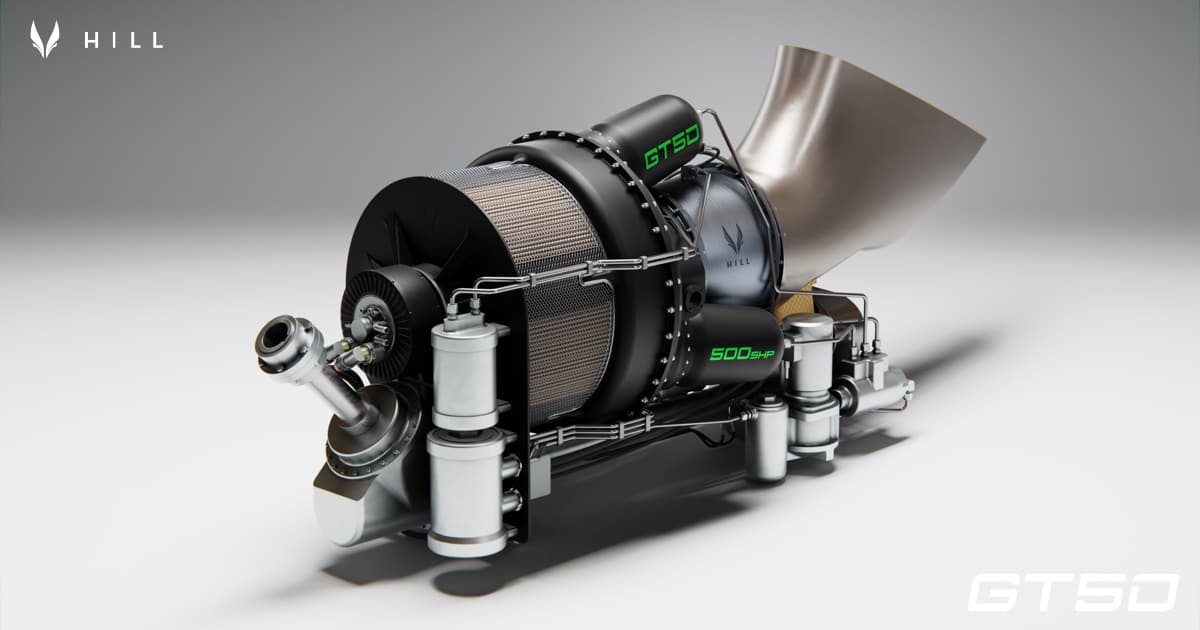Click Here to View This Page on Production Frontend
Click Here to Export Node Content
Click Here to View Printer-Friendly Version (Raw Backend)
Note: front-end display has links to styled print versions.
Content Node ID: 413190
Hill Helicopters CEO Jason Hill says he is completely convinced that he can build the GT50 turbine engine for his new HX50 helicopter for less than a price of a new Lycoming IO-540 six-cylinder piston aviation engine, even for less than $100,000 each. And where did he get this ambitious idea? In part, from the late Frank Robinson.
A quarter century ago, then 20-year-old Hill worked three jobs to save the $10,000 he needed to come to Long Beach, California, from the UK and get his helicopter license in a Robinson R22 over the course of six weeks. While in California, he arranged to meet Robinson at the company factory in Torrance. Hill, then an aeronautical engineering student, held the dream of building his own production helicopter and he wanted to talk to someone who had actually done it.
Hill recalled the meeting. “I dutifully turned up with my little book full of questions and stood there and grilled him in the lobby,” he said. “He was very polite and very generous with his time. He answered all of my questions and put me right on the things I got wrong. And he gave me what I thought was a knowing look as to why I was asking those questions because he probably asked those same ones himself a few years earlier. He made me believe that I could do this. It was one of the most formative moments of my life.”
Hill Helicopters aims to fly the HX50 for the first time later this year. Hill’s immediate market, first for the kit-assembled HX50 and later a fully-certified version, the HC50, is supercar buyers—private individuals with the means to spend up to $1 million or more on a discretionary purchase. But even with such rarified clientele, Hill sees a need for economy, and that centers on the engine. Hill called available engines “unreasonably expensive,” giving his company “no choice” but to “think bigger.”
“The GT50 is being designed and tested to the latest revision of EASA and FAR certification standards, which is a higher standard than any existing certified light aircraft engine. Our test engines will be run through full-life testing on the bench and our prototype aircraft will be flown for their full-service life as part of our ongoing shakedown testing,” Hill told AIN. Building the engine in-house exemplifies another example of Hill’s commitment to lean, vertically-integrated manufacturing, he added.
“The commercial forces here are much bigger than the engineering problems we have to solve,” said Hill. “In terms of the engine, there are really two sides to it: it really doesn’t cost all that much [comparatively] to develop these engines, but it becomes ludicrously expensive [when people only use the engine for a single purpose]. The [capital expenditure] gets very big very quickly. The key is just making sure that you can sell enough helicopters so that [the engine cap ex] becomes a smaller cost per helicopter. It comes back to the price point—you’ve got to be able to deliver the aircraft at a price point that commercial operators can finance it and make a living, and that private owners can afford to buy and not be crippled by the depreciation because of the calendar maintenance that is looming around the corner.” 
Referencing the engine, Hill explained his team began with performance targets including the ability to carry five 210-pound passengers and their luggage, cruise for three hours, and hover out-of-ground effect (OGE) at 10,000 feet msl on ISA plus 15 deg C temperature days. “That set the parameters for the engine,” Hill said, adding he aims for the GT50 to produce 400 shp max continuous, 440 shp for five minutes, and 500 shp for 30 seconds. That power provides enough margin to get pilots “out of trouble,” he said. While the GT50 traces its origin in an industrial engine to provide “low development risk,” the design has been modified for the helicopter. An annular combustor replaced the three-chamber combustor to improve the size of the package and reduce weight. Hill replaced the two-stage turbine with a single-stage model that is slightly higher loaded. It also optimized the secondary air system to improve cooling.
Hill is building parts for the first engine now and plans to build “three or four” more in the course of bench testing and validating the design and performance before it finds its way onto the aircraft. Hill said he thinks he can get individual engine cost below $100,000 “easily” based on a run rate of 500 helicopters a year, the company’s ultimate production goal. He does not see the need to offer the GT50 engine for other applications to make it economically viable, he further noted.
While admitting the road ahead, both for the helicopter and its engine, is ambitious, Hill remains confident of success. “It’s just like eating an elephant: one bite at a time,” he concluded.